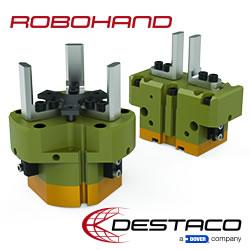Palm Sized Robot Dragonfly Up On Kickstarter-like Indiegogo
Wired Editor Chris Anderson Leaves To Run 3D Robotics/DIY Drones
Automation Fair 2012
Easily And Quickly Implementing Automatic Bin Picking
Connecting the Robotics Industry
13 Truths about "Smart Cameras"
Aspect Automation and Universal Robots
New DARPA's Pet-Proto Video
Last Nights Robot Hall of Fame Inducts NAO, PackBot, BigDog and WALL-E
TurtleBot 2 Available For Preorder
A Robotic Wheelchair Able To Climb Steps
Distribution Centers: An Emerging Robotics Frontier
Introductory To The Element Robotics Development Platform
Interview with David Sands of ST Robotics
IROS 2012 Videos
Records 1741 to 1755 of 1960
First | Previous | Next | Last
Industrial Robotics - Featured Product

